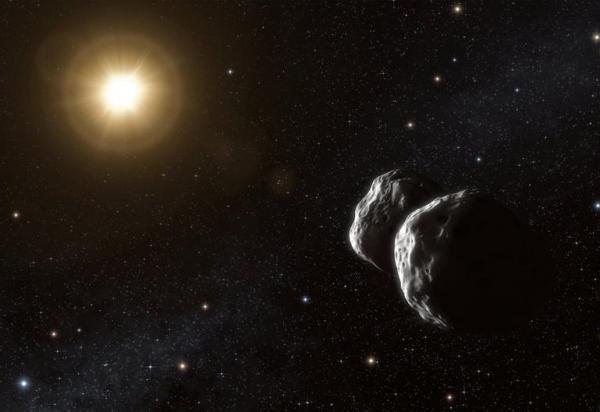Measure the size and shape of the small planet
Marco Delbo from the Côte d'Azur Observatory, France, spoke about the research he directed: 'Knowledge of small planets' dimensions and shapes is crucial in understanding how, In the early stages of the solar system, dust and rocks formed larger objects and how the collisions and accretions changed them. '
Direct images with optical lenses on the largest ground telescope such as the Very Large Telescope (VLT) in Chile, and space telescopes, or rado devices are currently the most commonly used methods for Learn about the small planet. However, direct images, including optical canals, are usually limited to one hundred of the largest small planets in the main belt, in radar equipment often limited to small planetary observations near Earth and collide with our planet.
Delbo and his colleagues reconstructed a new method of using interferometry to analyze small planets about 15 kilometers in diameter at the main small planetary belt, 200 kilometers away. This is equivalent to measuring the size of a tennis ball at a distance of 1000 km.This technique not only increases the number of objects that can be analyzed quickly, but more importantly, it takes small planets of smaller sizes, essentially different from those of small sized planets. Research, at hand.
 (Photo: ESO / L. Calçada)
(Photo: ESO / L. Calçada)
The technique uses an interferometer to combine light from two or more telescopes. Astronomers have demonstrated their method of using the VLTI of ESO, combining the light of two VLT 8.2m Telescopes. Co-author Sebastiano Ligori, from INAF-Torino, Italy, said: 'This means getting a sharp view like a telescope with a diameter equivalent to the distance between two telescopes used. , in this case 47 meters'.
The researchers applied this technique to Barbara's main small planetary belt, previously discovered by co-author Alberto Cellino, to have unusual properties. Although far away, VLTI observations show that the object has a strange shape.The most feasible model is a combination of two objects with each object the size of a main city - 37 and 21 km radius - separated by at least 24km . Delbo said: 'The two parts seem to overlap, so the object can look like a giant bean, it can be a separate object orbiting each other'.
If Barbara was proven to be two small planets, that would make more sense: by combining diameter measurements with orbital parameters, astronomers could calculate the fate of these objects. Ligori concludes: 'Barbara is a top observation target'.
Proven effectiveness of this new technique, the team can start a large-scale observation program to study small planets.
- Small size snacks that help fight fat
- The 'endurance' 22 people
- How small is the human being in the universe?
- Detected one more planet with water outside the solar system, the size of Jupiter
- Robot-shaped chain can change shape itself
- Small size animals feel time passes more slowly
- Planet also 'blooms'
- Look at the mole guessing the disease
- Measure the atmospheric composition to find life in Mars
- Decode the mystery of Mercury's personality
- How do you weigh a 190 ton whale swimming at sea?
- Detecting stone blocks of Cham Pa antiquities when constructing bridge foundation
 Van Allen's belt and evidence that the Apollo 11 mission to the Moon was myth
Van Allen's belt and evidence that the Apollo 11 mission to the Moon was myth The levels of civilization in the universe (Kardashev scale)
The levels of civilization in the universe (Kardashev scale) Today Mars, the sun and the Earth are aligned
Today Mars, the sun and the Earth are aligned The Amazon owner announced a secret plan to build a space base for thousands of people
The Amazon owner announced a secret plan to build a space base for thousands of people